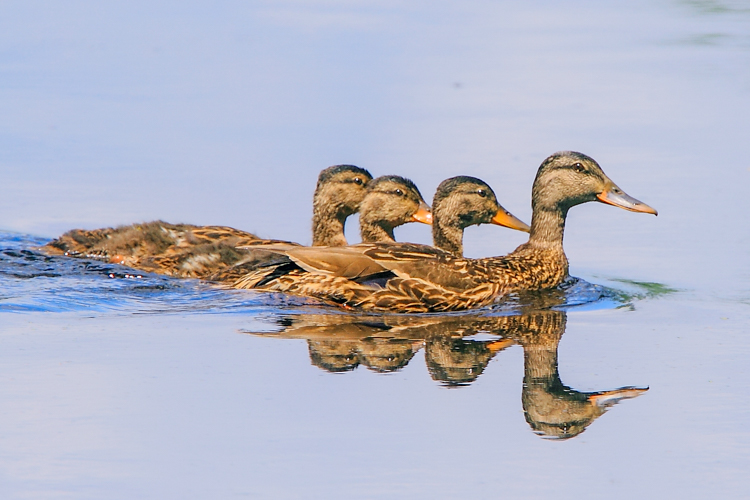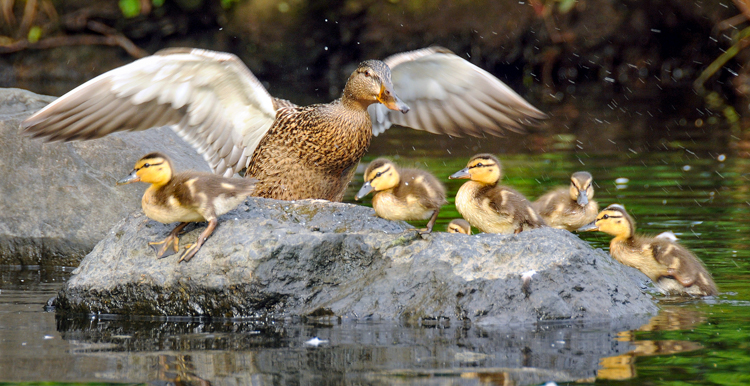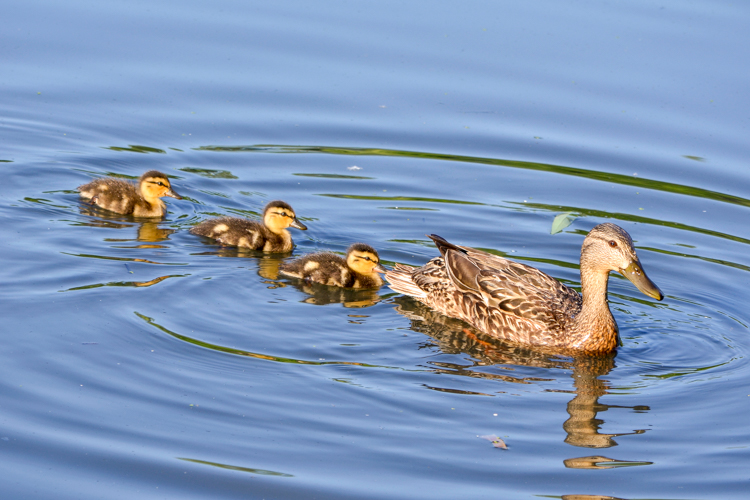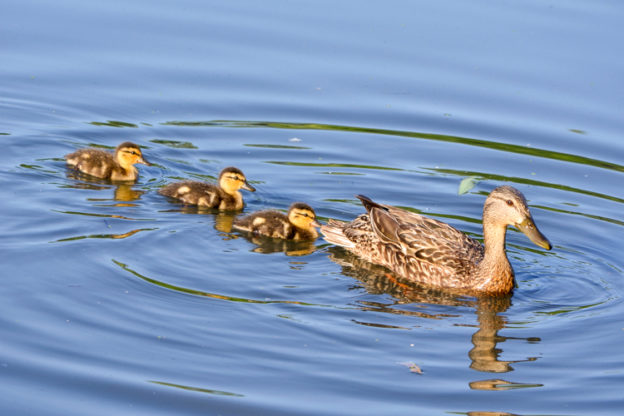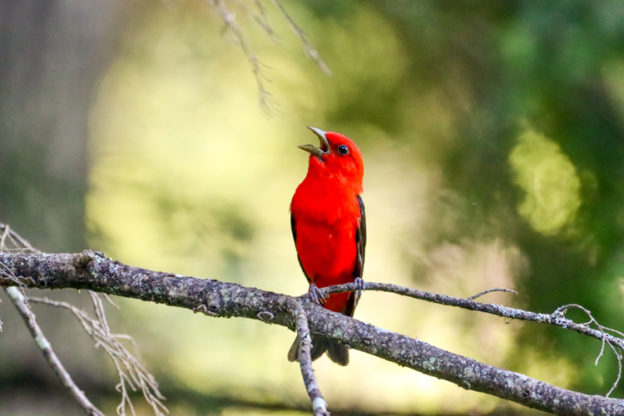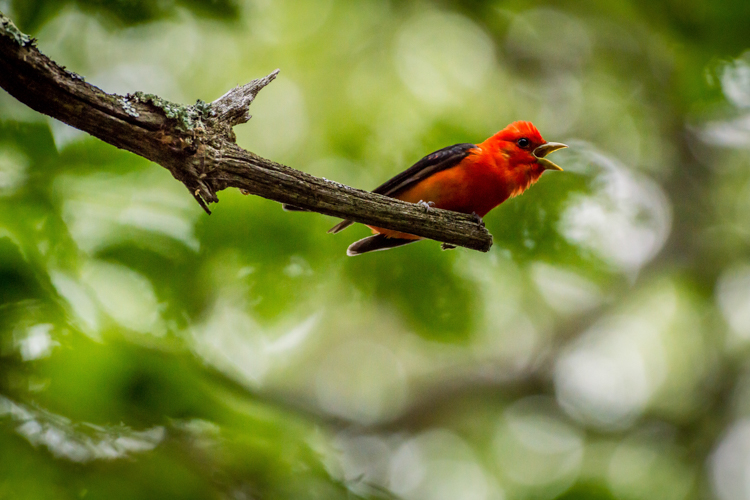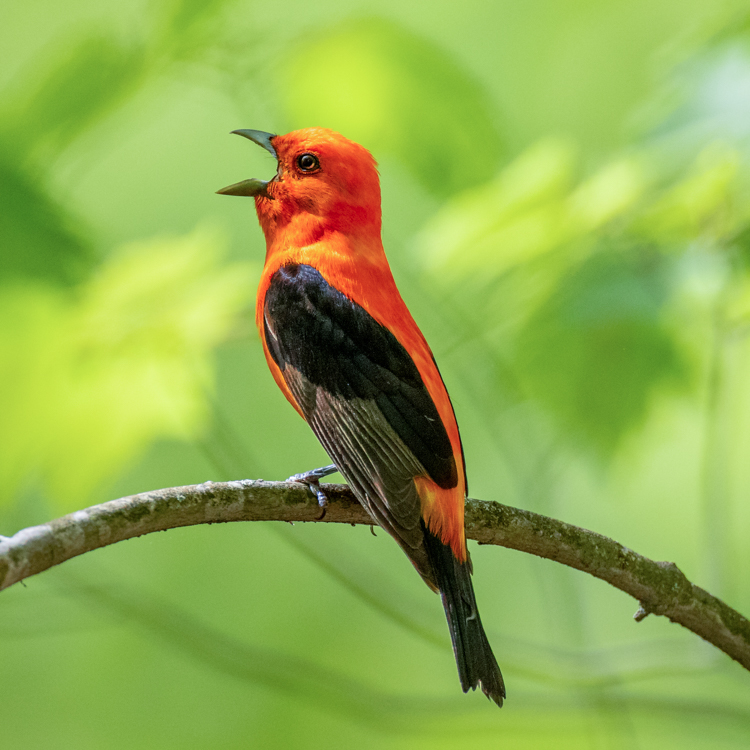As spring gives way to summer, young ducks that were but mere hatchlings a few weeks ago are growing rapidly. Mallard ducklings remain with their mother after hatching for about 50–60 days until they can fly on their own. Mother Mallards keep their fluffy little ducklings together for protection against predators and favor open water for the same reason, so you’ll often see them paddling along in a cluster or an orderly line.
It takes Mallards over a year to reach full adulthood, but they can begin flying at about three or four months when their wings fully develop and the blue/purple “speculum” feathers on their wings grow in. Not long after that, their bills change color, too, which means they can finally be visually differentiated by sex—males have yellow bills while females’ are black and orange. The plumage is still similar, but by ten months of age, the males will grow into their more vibrant colors: emerald-green heads, white neck rings, reddish breast plumage, and a curly central tail feather known as a drake feather.
Have you seen Mallard ducklings near bodies of water in your community? Can you guess how old they are based on their plumage? Check out our tips for when ducks nest in your backyard and enjoy these five adorable photos of ducklings from our annual Picture This: Your Great Outdoors photo contest.


